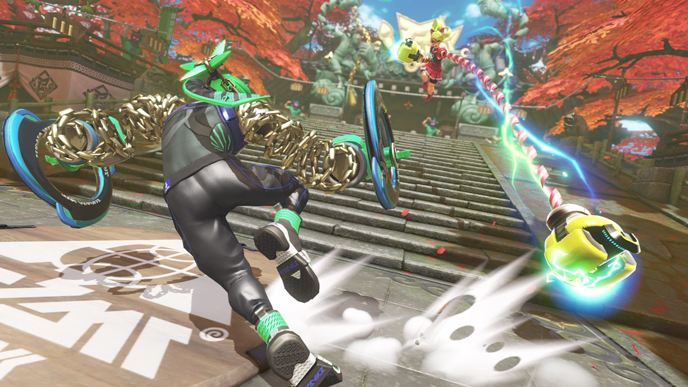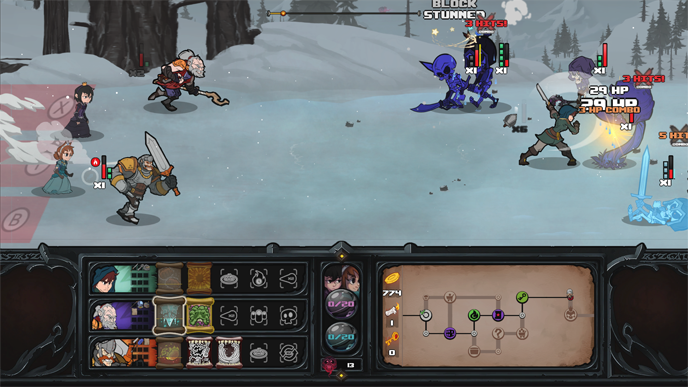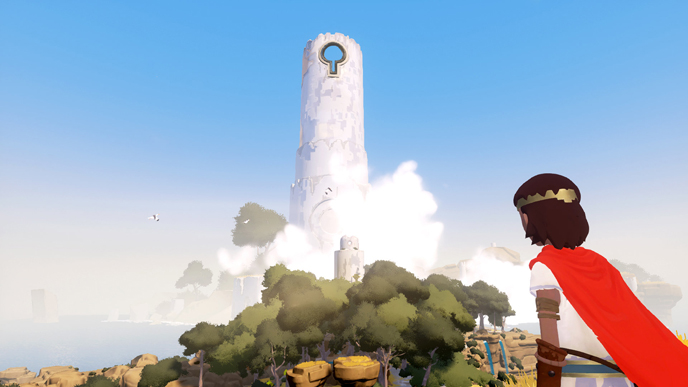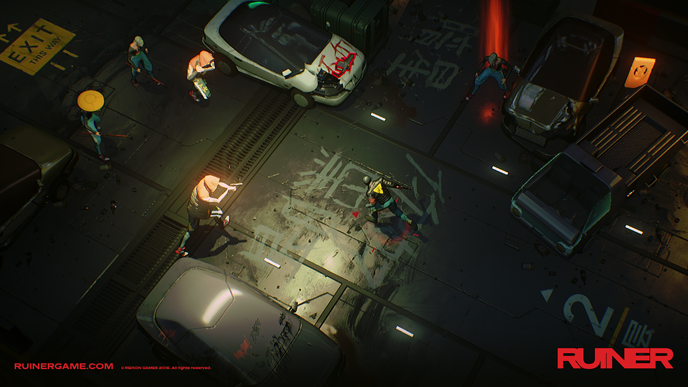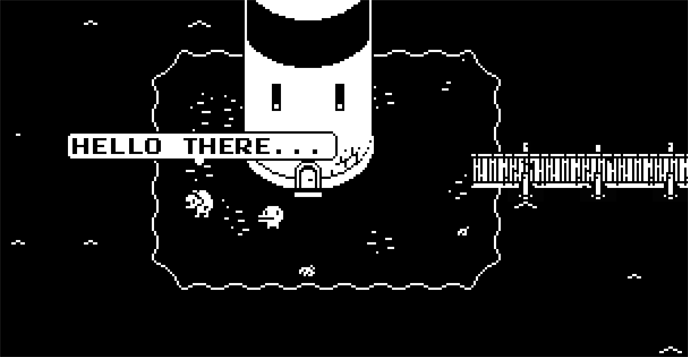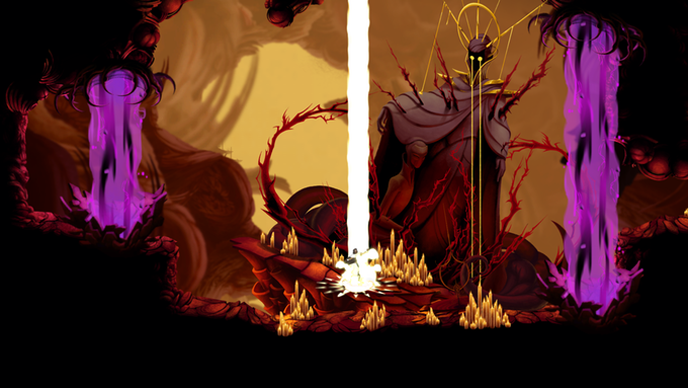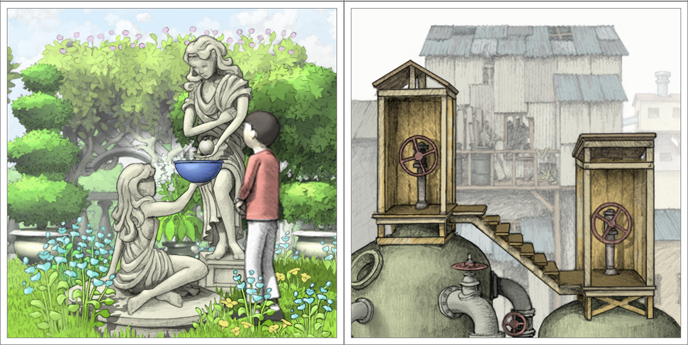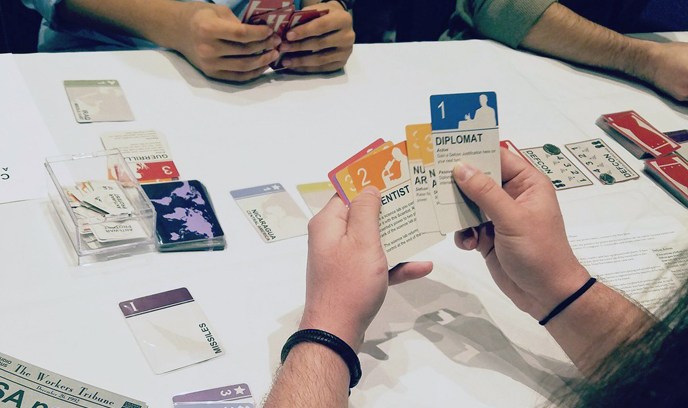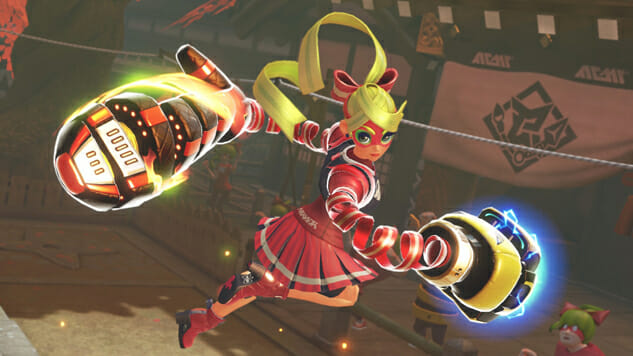
A third year of PAX South took place in San Antonio this past weekend, and once again, the showfloor is larger than the last. Several e-sports events and a greater industry presence, coupled with Nintendo bringing the Switch out for the public to play, made South feel like it was closing the gap with its bigger siblings on the east and west coasts.
Because South falls in January, the show’s debuts and surprises were significantly skewed towards independent developers and Early Access-bound games. There were ten games in particular though, and one tabletop game, that I think you should keep your eye on. Here’s our favorite games from the third annual PAX South.
10. ARMS
I played a number of the upcoming launch window games for the new Nintendo Switch console, from Breath of the Wild to the new Bomberman and 1-2 Switch, but ARMS is the one I haven’t stopped thinking about since my time with the Switch. It plays a little bit like the dual-joystick mech-combat game Virtual On, where you strafe around your opponent in a circle, utilizing boxing-esque weaponry to play spacing-related mind games with your opponent. The motion controls of the Joy Con controllers work really well, and the diversity of combatants and tools available give ARMS some legs. It isn’t really a Wii Boxing repeat, but rather, a spiritual successor to a style of arena combat that feels perfectly at home on the Switch.
9. Has-Been Heroes
While gaining notoriety as part of the Switch’s first salvo of games post-launch, Has-Been Heroes has a lot more going for it than just being on a new Nintendo console. A hybrid of lane-based tower defense games like Plants vs. Zombies and roguelikes in the vein of Darkest Dungeon or FTL, Has-Been Heroes is challenging but engaging. Rotating heroes around to lanes and timing combos is critical to advancing through each map, and there’s a bevy of spells and abilities to deal with the larger skeletons and mobs, with the interactions between each spell creating cataclysmic effects. Once people have cooled off on Zelda and start looking for more to play on their new console, Has-Been Heroes will be in a good place to occupy their time on March 28.
8. Dusk
Dusk is almost painfully faithful to late ‘90s first-person shooters like Quake and Doom. When I say painfully, it’s because there are graphics options that let you rescale the resolution, pixelate the graphics and literally de-tune the game to be more in line with what Quake II looked like in 1997. The campaign of Dusk is tongue-in-cheek, throwing hordes of demons, chainsaw-toting Leatherface fanboys and faux-klansmen at you en masse, with a healthy heaping of color-coded keys and doors. It’s not all cut-paste; weapons like the Riveter, a remote-detonated grenade launcher, and an actual mortar cannon add new takes to an arsenal of classics, and an endless mode pushes your ability to stay alive against ever-increasing waves of bad guys. Dusk is faithful where it both needs and wants to be, but adds enough new twists on the formula to be worth a look when it hits this year.
7. Rime
Despite some tumultuous years and questions over whether Rime would ever see the light of day, you couldn’t tell by only playing the demo at PAX South. A sweeping soundtrack and gorgeous aesthetic complements a sense of discovery, as the protagonist follows his spirit-fox guide through ancient ruins. Jade orbs light up to the sound of the hero’s voice, activating mechanisms and shifting the world. Each puzzle felt natural to solve, but wonderful in its process of getting the player to follow its line of thought. To say more would spoil some of the clever tricks the game plays, but regardless of the long wait for Rime to resurface, it seems as clever and powerful as it was in 2013.
6. Ruiner
The intro to Ruiner opens with the player’s character being literally mind-hacked and given instructions: kill the boss. Exiting the elevator, he’s met by a legion of security guards, and armed with nothing but a lead pipe, starts to work on the task at hand. Reminiscent of last year’s Hyper Light Drifter, dashing and firing before closing in for the kill is the only way to stay alive under a hail of bullets. It was fast, brutal, and ruined me – literally, in my demo, I was unable to take down the first stage’s big bad, and had to return to the booth to keep trying my hand at it. If an unrelentingly punishing action game with a touch of cyberpunk anime, in the styles of Ghost in the Shell, Serial Experiments Lain and Patlabor, sounds appealing to you at all, Ruiner is one you need to be following.
5. Minit
A collaboration between several developers including Kitty Calis, Jukio Kallio, Dominik Johann and Vlambeer’s Jan Willem Nijman, Minit is a game where each day of your character’s life consists of 60 seconds. While mechanically akin to an older Zelda game, the time limit allows for interesting puzzles, requiring the player to adapt quickly and recognize what actions must be done in what order to accomplish new goals. Though bushes grow back and enemies respawn, the short-lived hero’s items carry over each day, so no backtracking is required to regain a sword or watering can. A lo-fi, simple take on a concept, extrapolated out into a greater game, Minit is a game that doesn’t demo well on a show floor per se; it’s one you want to play at home, scouring over every nook and cranny to find the next way forward.
4. Sundered
The developer of Jotun Thunder Lotus Games is already turning its hand-drawn aesthetic to a new game with Sundered. Inspired by Castlevania games and utilizing a roguelike skill tree that persists through each life and death, Sundered brings in a level of Eldritch horror and Cthulhu mythos to accentuate its twisting halls and corridors. Beyond the look of Jotun was its sense of scale in boss fights, and Sundered’s demo ends with a stinger that teases a similarly massive scale of encounters to take on. Come for the wall-jumping and exploration, but stay for the absolutely gorgeous illustrations. Sundered is currently over 300 percent funded on Kickstarter, and it isn’t hard to see why after playing just a short section of it.
3. Gorogoa
A passion project for a lone developer over four years in the making, Jason Roberts put everything into this illustrated puzzle game. Using a two-by-two grid, shifting illustrations and pictures, the depth comes into view by discovering new perspectives in each drawing. A doorway can be moved to another picture, opening up new points of view or traversal for the wayward protagonist being led through each drawing. It’s quiet, surreal and truly feels like a project of devotion. Coming to Steam and mobile devices later this year, Gorogoa isn’t going to “wow” you in the ways most major games might, but it left me genuinely mouth agape at the intricacies of its puzzles and aesthetic.
2. Statik
A key issue with virtual reality has been that it’s hard to justify the use of a conventional game controller in a virtual world. Thus VR companies have turned to tools like the Oculus Touch to remedy the problem. Statik does the opposite. It justifies the controller by locking the player’s hands in a box, unable to see the controls they are manipulating, forced to solve puzzles by pressing buttons and using contextual, ambient clues. Each puzzle box is intricate and engaging, requiring recognition of hidden clues in the rooms and memorization of the box’s functions to solve. A multiplayer mode pushes it further, letting a separate person link their phone to the game and solve a larger puzzle with the headset-wearer, creating an effective second-screen VR experience. Statik is one of the most clever uses of virtual reality I’ve seen across all hardware, and will be coming to the PlayStation VR platform later this year.
1. What Remains of Edith Finch
Because Edith Finch also made my PlayStation Experience list, I knew that whatever I saw at PAX South would really have to blow me out of the water to make it again. Well, here we are. What Remains of Edith Finch continues to be one of my most anticipated games this year. Taken through a new section of the house featuring Calvin Finch, the demo was a little more centered on the spaces in the house itself. As the Finches built up the monolith of the Finch estate, small side tunnels and hideaways grew out of the space between. These spaces feel lived in, natural and provide moments of environmental storytelling through still images and setting rather than explicit exposition. What Remains of Edith Finch is pushing a lot of what this genre of narrative exploration games can do, and looks to be something special when it gets released this year.
Honorable Mention: Caps & Hammers
At PAX in particular, it’s always nice to venture outside the digital and get a little more analog with some board games. One in particular caught my eye this weekend, a Cold War game called Caps & Hammers that seemed to tick off all the boxes for a game I would enjoy. A two-player card game, the goal is to take control of swing countries across seven rounds, playing face-down cards to mask your movements and confuse your opponent. It felt almost like Stratego, in that part of the strategy was keeping your movements and placements hidden before activating them at just the right time. Keeping an Admiral at the ready to move between countries in contention was paramount to success, as was utilizing diplomats to justify nuclear actions in other countries. Spies undo plans and act as a counterbalance to everything, and a race to the moon becomes politicized in its ability to quell point-reducing protesters. Remarkably simple to understand but intricate in play, Caps & Hammers stood out as one of the most interesting tabletop games I saw at PAX South.
Eric Van Allen is a Texas-based writer. You can follow his e-sports and games rumblings @seamoosi on Twitter.
